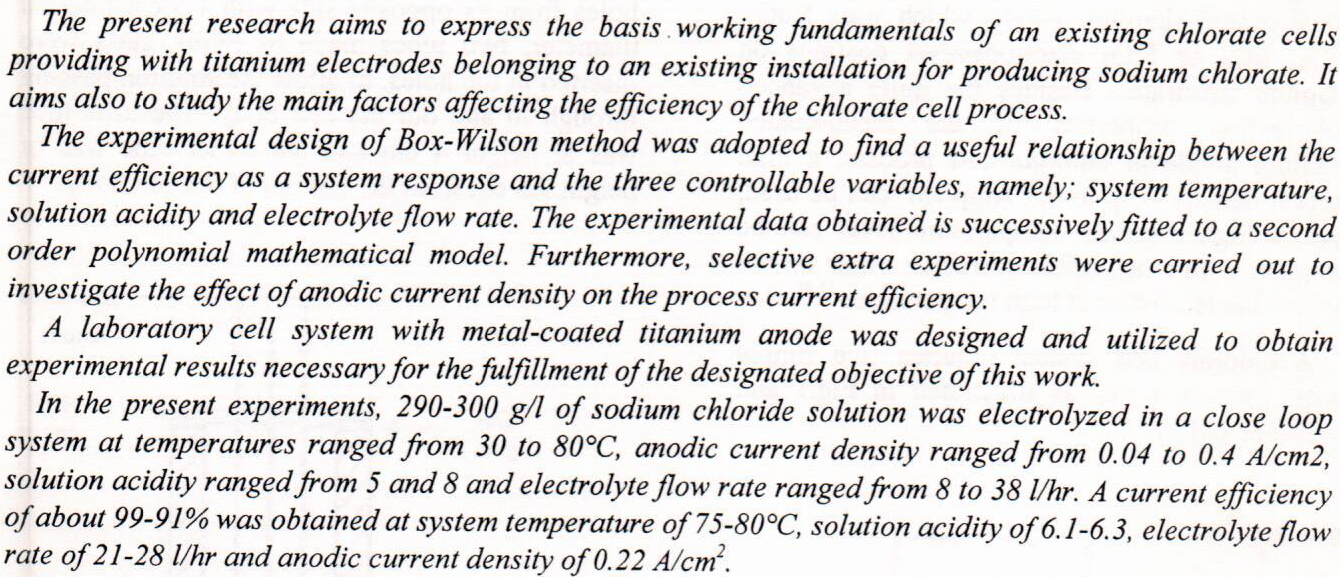
Spray pyrolysis technique was used to make Carbon60-Zinc oxide (C60-ZnO) thin films, and chemical, structural, antibacterial, and optical characterizations regarding such nanocomposite have been done prior to and following treatment. Fullerene peaks in C60-ZnO thin films are identical and appear at the same angles. Following the treatment of the plasma, the existence regarding fullerene peaks in the thin films investigated suggests that the crystallographic quality related to C60-ZnO thin films has enhanced. Following plasma treatment, field emission scanning electron microscopy (FESEM) images regarding a C60-ZnO thin film indicate that both zinc oxide and fullerene particles had shrunk in the size and have an even distribution. In addition
... Show More (1)
(1)
 (1)
(1)
Empirical and statistical methodologies have been established to acquire accurate permeability identification and reservoir characterization, based on the rock type and reservoir performance. The identification of rock facies is usually done by either using core analysis to visually interpret lithofacies or indirectly based on well-log data. The use of well-log data for traditional facies prediction is characterized by uncertainties and can be time-consuming, particularly when working with large datasets. Thus, Machine Learning can be used to predict patterns more efficiently when applied to large data. Taking into account the electrofacies distribution, this work was conducted to predict permeability for the four wells, FH1, FH2, F
... Show More (5)
(5)
 (2)
(2)
 (23)
(23)
 (18)
(18)
The aim of the current study was to develop a nanostructured double-layer for hydrophobic molecules delivery system. The developed double-layer consisted of polyethylene glycol-based polymeric (PEG) followed by gelatin sub coating of the core hydrophobic molecules containing sodium citrate. The polymeric composition ratio of PEG and the amount of the sub coating gelatin were optimized using the two-level fractional method. The nanoparticles were characterized using AFM and FT-IR techniques. The size of these nano capsules was in the range of 39-76 nm depending on drug loading concentration. The drug was effectively loaded into PEG-Gelatin nanoparticles (≈47%). The hydrophobic molecules-release characteristics in terms of controlled-releas
... Show More (13)
(13)
 (3)
(3)
This study involved the treatment of textile wastewater contaminated with direct blue 15 dye (DB15) using a heterogeneous photo-Fenton-like process. Bimetallic iron/copper nanoparticles loaded on bentonite clay were used as heterogeneous catalysts and prepared via liquid-phase reduction method using eucalyptus leaves extract (E-Fe/Cu@BNPs). Characterization methods were applied to resultant particles (NPs), including SEM, BET, and FTIR techniques. The prepared NPs were found with porous and spherical shapes with a specific surface area of particles was 28.589 m2/g. The effect of main parameters on the photo-Fenton-like degradation of DB15 was investigated through batch and continuous fixed-bed systems. In batch mode, pH, H2O2 dosage, DB15 c
... Show More (15)
(15)
 (16)
(16)
To evaluate the shear bond strength and interfacial morphology of sound and caries-affected dentin (CAD) bonded to two resin-modified glass ionomer cements (RMGICs) after 24 hours and two months of storage in simulated body fluid at 37°C.
Sixty-four permanent human mandibular first molars (32 sound and 32 with occlusal caries, following the International Caries Detection and Assessment System) were selected. Each prepared substrate (sound and CAD) was co
 (13)
(13)
 (13)
(13)
 (34)
(34)
Date palm silver nanoparticles are a green synthesis method used as antibacterial agents. Today,
there is a considerable interest in it because it is safe, nontoxic, low costly and ecofriendly. Biofilm bacteria
existing in marketed local milk is at highly risk on population health and may be life-threatening as most
biofilm-forming bacteria are multidrug resistance. The goal of current study is to eradicate biofilm-forming
bacteria by alternative treatment green synthesis silver nanoparticles. The biofilm formation by bacterial
isolates was detected by Congo red method. The silver nanoparticles were prepared from date palm
(khestawy) fruit extract. The formed nanoparticles were characterized with UV-Vis
 (17)
(17)
 (5)
(5)
A spectrophotometric- reverse flow injection analysis (rFIA) method has been proposed for the determination of Nitrazepam (NIT) in pure and pharmaceutical preparations. The method is based upon the coupling reaction of NIT with a new reagent O-Coumaric acid (OCA) in the presence of sodium periodate in an aqueous solution. The blue color product was measured at 632 nm. The variation (chemical and physical parameters) related with reverse flow system were estimated. The linearity was over the range 15 - 450 µg/mL of NIT with detection limits and limit of quantification of 3.425 and 11.417 µg mL-1 NIT,respectively. The sample throughput of 28 samples
... Show More (9)
(9)
 (1)
(1)
